1. Abrous DN, Koehl M, Le Moal M. Adult neurogenesis : from precursors to network and physiology. Physiol Rev. 2005; 85:523–569. PMID:
15788705.
2. Adelson PD, Scott RM. Pial synangiosis for moyamoya syndrome in children. Pediatr Neurosurg. 1995; 23:26–33. PMID:
7495663.

3. Asahara T, Masuda H, Takahashi T, Kalka C, Pastore C, Silver M, et al. Bone marrow origin of endothelial progenitor cells responsible for postnatal vasculogenesis in physiological and pathological neovascularization. Circ Res. 1999; 85:221–228. PMID:
10436164.

4. Assmus B, Schächinger V, Teupe C, Britten M, Lehmann R, Döbert N, et al. Transplantation of Progenitor Cells and Regeneration Enhancement in Acute Myocardial Infarction (TOPCARE-AMI). Circulation. 2002; 106:3009–3017. PMID:
12473544.

5. Bang OY, Lee JS, Lee PH, Lee G. Autologous mesenchymal stem cell transplantation in stroke patients. Ann Neurol. 2005; 57:874–882. PMID:
15929052.

6. Couillard-Despres S, Winner B, Schaubeck S, Aigner R, Vroemen M, Weidner N, et al. Doublecortin expression levels in adult brain reflect neurogenesis. Eur J Neurosci. 2005; 21:1–14. PMID:
15654838.

7. Crain BJ, Tran SD, Mezey E. Transplanted human bone marrow cells generate new brain cells. J Neurol Sci. 2005; 233:121–123. PMID:
15949500.

8. Curtis MA, Kam M, Nannmark U, Anderson MF, Axell MZ, Wikkelso C, et al. Human neuroblasts migrate to the olfactory bulb via a lateral ventricular extension. Science. 2007; 315:1243–1249. PMID:
17303719.

9. Endo M, Kawano N, Miyaska Y, Yada K. Cranial burr hole for revascularization in moyamoya disease. J Neurosurg. 1989; 71:180–185. PMID:
2746343.

10. Eriksson PS, Perfilieva E, Björk-Eriksson T, Alborn AM, Nordborg C, Peterson DA, et al. Neurogenesis in the adult human hippocampus. Nat Med. 1998; 4:1313–1317. PMID:
9809557.

11. Ezura M, Yoshimoto T, Fujiwara S, Takahashi A, Shirane R, Mizoi K. Clinical and angiographic follow-up of childhood-onset moyamoya disease. Childs Nerv Syst. 1995; 11:591–594. PMID:
8556726.

12. Ferrara N, Gerber HP, LeCouter J. The biology of VEGF and its receptors. Nat Med. 2003; 9:669–676. PMID:
12778165.

13. Fukui M. Current state of study on moyamoya disease in Japan. Surg Neurol. 1997; 47:138–143. PMID:
9040816.

14. Furlanetti LL, de Oliveira RS, Santos MV, Farina JA Jr, Machado HR. Multiple cranial burr holes as an alternative treatment for total scalp avulsion. Childs Nerv Syst. 2010; 26:745–749. PMID:
20390420.

15. Gage FH. Mammalian neural stem cells. Science. 2000; 287:1433–1438. PMID:
10688783.

16. Gould E, Beylin A, Tanapat P, Reeves A, Shors TJ. Learning enhances adult neurogenesis in the hippocampal formation. Nat Neurosci. 1999; 2:260–265. PMID:
10195219.

17. Greaves MF, Brown J, Molgaard HV, Spurr NK, Robertson D, Delia D, et al. Molecular features of CD34 : a hemopoietic progenitor cell-associated molecule. Leukemia. 1992; 6(Suppl 1):31–36. PMID:
1372379.
18. Grunewald M, Avraham I, Dor Y, Bachar-Lustig E, Itin A, Jung S, et al. VEGF-induced adult neovascularization : recruitment, retention, and role of accessory cells. Cell. 2006; 124:175–189. PMID:
16413490.

19. Harrigan MR, Ennis SR, Masada T, Keep RF. Intraventricular infusion of vascular endothelial growth factor promotes cerebral angiogenesis with minimal brain edema. Neurosurgery. 2002; 50:589–598. PMID:
11841728.

20. Houkin K, Kuroda S, Ishikawa T, Abe H. Neovascularization (angiogenesis) after revascularization in moyamoya disease. Which technique is most useful for moyamoya disease? Acta Neurochir (Wien). 2000; 142:269–276. PMID:
10819257.

21. Iwashita T, Tada T, Zhan H, Tanaka Y, Hongo K. Harvesting blood stem cells from cranial bone at craniotomy--a preliminary study. J Neurooncol. 2003; 64:265–270. PMID:
14558603.
22. Jiang W, Gu W, Brännström T, Rosqvist R, Wester P. Cortical neurogenesis in adult rats after transient middle cerebral artery occlusion. Stroke. 2001; 32:1201–1207. PMID:
11340234.

23. Jin K, Sun Y, Xie L, Peel A, Mao XO, Batteur S, et al. Directed migration of neuronal precursors into the ischemic cerebral cortex and striatum. Mol Cell Neurosci. 2003; 24:171–189. PMID:
14550778.

24. Kamata I, Terai Y, Ohmoto T. Attempt to establish an experimental animal model of moyamoya disease using immuno-embolic material--histological changes of the arterial wall resulting from immunological reaction in cats. Acta Med Okayama. 2003; 57:143–150. PMID:
12908012.
25. Kang HJ, Kim HS, Zhang SY, Park KW, Cho HJ, Koo BK, et al. Effects of intracoronary infusion of peripheral blood stem-cells mobilised with granulocyte-colony stimulating factor on left ventricular systolic function and restenosis after coronary stenting in myocardial infarction : the MAGIC cell randomised clinical trial. Lancet. 2004; 363:751–756. PMID:
15016484.

26. Kapu R, Symss NP, Cugati G, Pande A, Vasudevan CM, Ramamurthi R. Multiple burr hole surgery as a treatment modality for pediatric moyamoya disease. J Pediatr Neurosci. 2010; 5:115–120. PMID:
21559155.

27. Kawaguchi S, Okuno S, Sakaki T. Effect of direct arterial bypass on the prevention of future stroke in patients with the hemorrhagic variety of moyamoya disease. J Neurosurg. 2000; 93:397–401. PMID:
10969936.

28. Kawaguchi T, Fujita S, Hosoda K, Shibata Y, Komatsu H, Tamaki N. [Usefulness of multiple burr-hole operation for child Moyamoya disease]. No Shinkei Geka. 1998; 26:217–224. PMID:
9558653.
29. Kawaguchi T, Fujita S, Hosoda K, Shose Y, Hamano S, Iwakura M, et al. Multiple burr-hole operation for adult moyamoya disease. J Neurosurg. 1996; 84:468–476. PMID:
8609560.

30. Kawamoto H, Inagawa T, Ikawa F, Sakoda E. A modified burr-hole method in galeoduroencephalosynangiosis for an adult patient with probable moyamoya disease--case report and review of the literature. Neurosurg Rev. 2001; 24:147–150. PMID:
11485238.

31. Kawamoto H, Kiya K, Mizoue T, Ohbayashi N. A modified burr-hole method 'galeoduroencephalosynangiosis' in a young child with moyamoya disease. A preliminary report and surgical technique. Pediatr Neurosurg. 2000; 32:272–275. PMID:
10965275.

32. Kempermann G, Kuhn HG, Gage FH. More hippocampal neurons in adult mice living in an enriched environment. Nature. 1997; 386:493–495. PMID:
9087407.

33. Khan N, Schuknecht B, Boltshauser E, Capone A, Buck A, Imhof HG, et al. Moyamoya disease and Moyamoya syndrome : experience in Europe; choice of revascularisation procedures. Acta Neurochir (Wien). 2003; 145:1061–1071. discussion 1071PMID:
14663563.

34. Kim DI, Kim MJ, Joh JH, Shin SW, Do YS, Moon JY, et al. Angiogenesis facilitated by autologous whole bone marrow stem cell transplantation for Buerger's disease. Stem Cells. 2006; 24:1194–1200. PMID:
16439614.

35. Kim HS, Lee HJ, Yeu IS, Yi JS, Yang JH, Lee IW. The neovascularization effect of bone marrow stromal cells in temporal muscle after encephalomyosynangiosis in chronic cerebral ischemic rats. J Korean Neurosurg Soc. 2008; 44:249–255. PMID:
19096686.

36. Kirana S, Stratmann B, Lammers D, Negrean M, Stirban A, Minartz P, et al. Wound therapy with autologous bone marrow stem cells in diabetic patients with ischaemia-induced tissue ulcers affecting the lower limbs. Int J Clin Pract. 2007; 61:690–692. PMID:
17394441.

37. Kuhn HG, Dickinson-Anson H, Gage FH. Neurogenesis in the dentate gyrus of the adult rat : age-related decrease of neuronal progenitor proliferation. J Neurosci. 1996; 16:2027–2033. PMID:
8604047.

38. Kusaka N, Sugiu K, Tokunaga K, Katsumata A, Nishida A, Namba K, et al. Enhanced brain angiogenesis in chronic cerebral hypoperfusion after administration of plasmid human vascular endothelial growth factor in combination with indirect vasoreconstructive surgery. J Neurosurg. 2005; 103:882–890. PMID:
16304993.

39. Liu J, Solway K, Messing RO, Sharp FR. Increased neurogenesis in the dentate gyrus after transient global ischemia in gerbils. J Neurosci. 1998; 18:7768–7778. PMID:
9742147.

40. Longa EZ, Weinstein PR, Carlson S, Cummins R. Reversible middle cerebral artery occlusion without craniectomy in rats. Stroke. 1989; 20:84–91. PMID:
2643202.

41. Michalczyk K, Ziman M. Nestin structure and predicted function in cellular cytoskeletal organisation. Histol Histopathol. 2005; 20:665–671. PMID:
15736068.
42. Ming GL, Song H. Adult neurogenesis in the mammalian central nervous system. Annu Rev Neurosci. 2005; 28:223–250. PMID:
16022595.

43. Newell DW, Vilela MD. Superficial temporal artery to middle cerebral artery bypass. Neurosurgery. 2004; 54:1441–1448. discussion 1448-1449PMID:
15157302.

44. Ohira K. Injury-induced neurogenesis in the mammalian forebrain. Cell Mol Life Sci. 2011; 68:1645–1656. PMID:
21042833.

45. Oliveira RS, Amato MC, Simão GN, Abud DG, Avidago EB, Specian CM, et al. Effect of multiple cranial burr hole surgery on prevention of recurrent ischemic attacks in children with moyamoya disease. Neuropediatrics. 2009; 40:260–264. PMID:
20446218.

46. Parent JM, Yu TW, Leibowitz RT, Geschwind DH, Sloviter RS, Lowenstein DH. Dentate granule cell neurogenesis is increased by seizures and contributes to aberrant network reorganization in the adult rat hippocampus. J Neurosci. 1997; 17:3727–3738. PMID:
9133393.

47. Renault MA, Losordo DW. Therapeutic myocardial angiogenesis. Microvasc Res. 2007; 74:159–171. PMID:
17950369.

48. Ross IB, Shevell MI, Montes JL, Rosenblatt B, Watters GV, Farmer JP, et al. Encephaloduroarteriosynangiosis (EDAS) for the treatment of childhood moyamoya disease. Pediatr Neurol. 1994; 10:199–204. PMID:
8060421.

49. Shweiki D, Itin A, Soffer D, Keshet E. Vascular endothelial growth factor induced by hypoxia may mediate hypoxia-initiated angiogenesis. Nature. 1992; 359:843–845. PMID:
1279431.

50. Suzuki M, Iso-o N, Takeshita S, Tsukamoto K, Mori I, Sato T, et al. Facilitated angiogenesis induced by heme oxygenase-1 gene transfer in a rat model of hindlimb ischemia. Biochem Biophys Res Commun. 2003; 302:138–143. PMID:
12593860.

51. Takahashi A, Kamiyama H, Houkin K, Abe H. Surgical treatment of childhood moyamoya disease--comparison of reconstructive surgery centered on the frontal region and the parietal region. Neurol Med Chir (Tokyo). 1995; 35:231–237. PMID:
7596466.
52. Taupin P. BrdU immunohistochemistry for studying adult neurogenesis : paradigms, pitfalls, limitations, and validation. Brain Res Rev. 2007; 53:198–214. PMID:
17020783.

53. van Praag H, Kempermann G, Gage FH. Running increases cell proliferation and neurogenesis in the adult mouse dentate gyrus. Nat Neurosci. 1999; 2:266–270. PMID:
10195220.

54. Wang YQ, Guo X, Qiu MH, Feng XY, Sun FY. VEGF overexpression enhances striatal neurogenesis in brain of adult rat after a transient middle cerebral artery occlusion. J Neurosci Res. 2007; 85:73–82. PMID:
17061257.

55. Woodbury D, Schwarz EJ, Prockop DJ, Black IB. Adult rat and human bone marrow stromal cells differentiate into neurons. J Neurosci Res. 2000; 61:364–370. PMID:
10931522.

56. Yanagawa Y, Sugiura T, Suzuki K, Okada Y. Moyamoya disease associated with positive findings for rheumatoid factor and myeloperoxidase-anti-neutrophil cytoplasmic antibody. West Indian Med J. 2007; 56:282–284. PMID:
18072414.


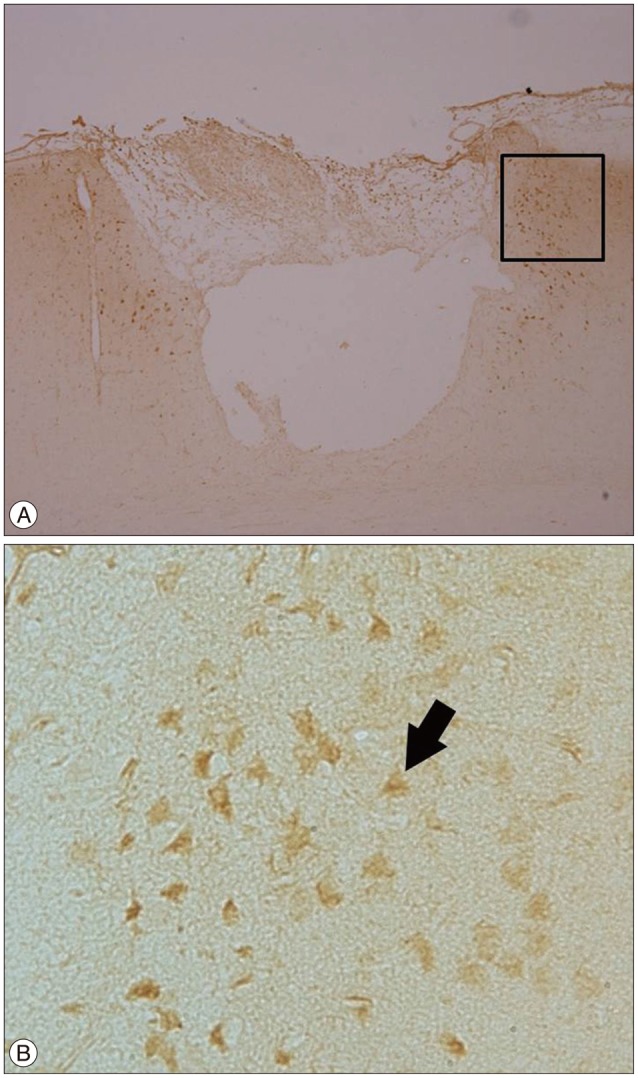




 PDF
PDF ePub
ePub Citation
Citation Print
Print


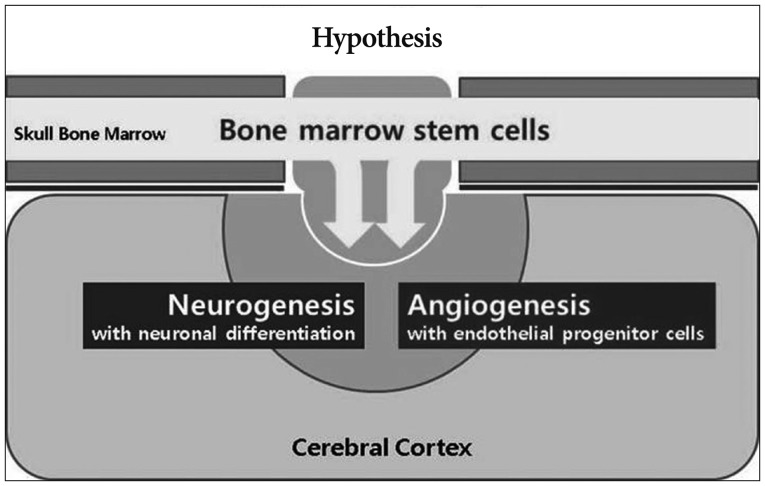
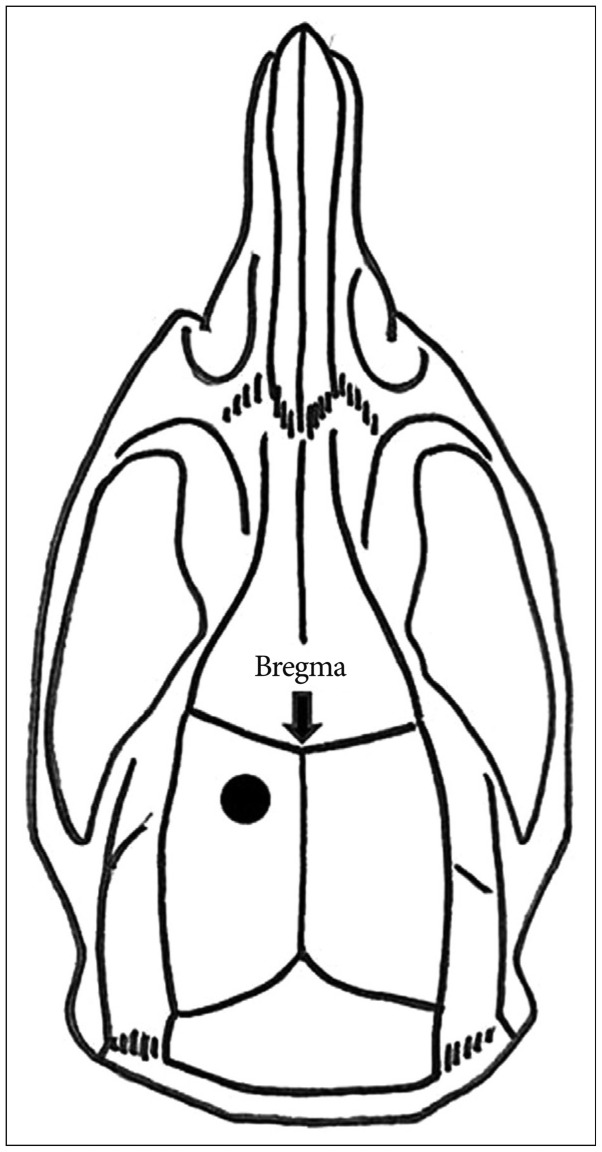
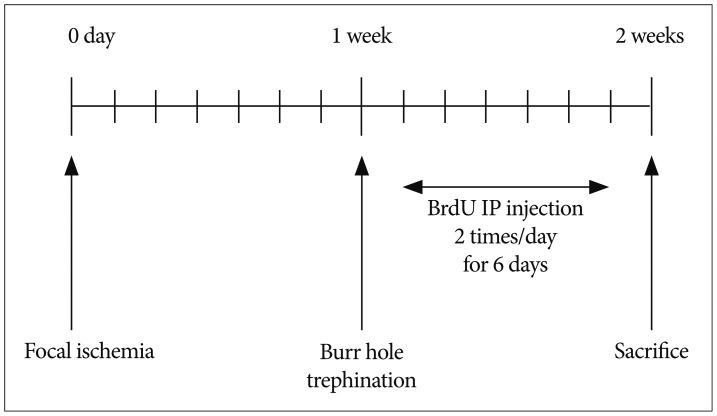
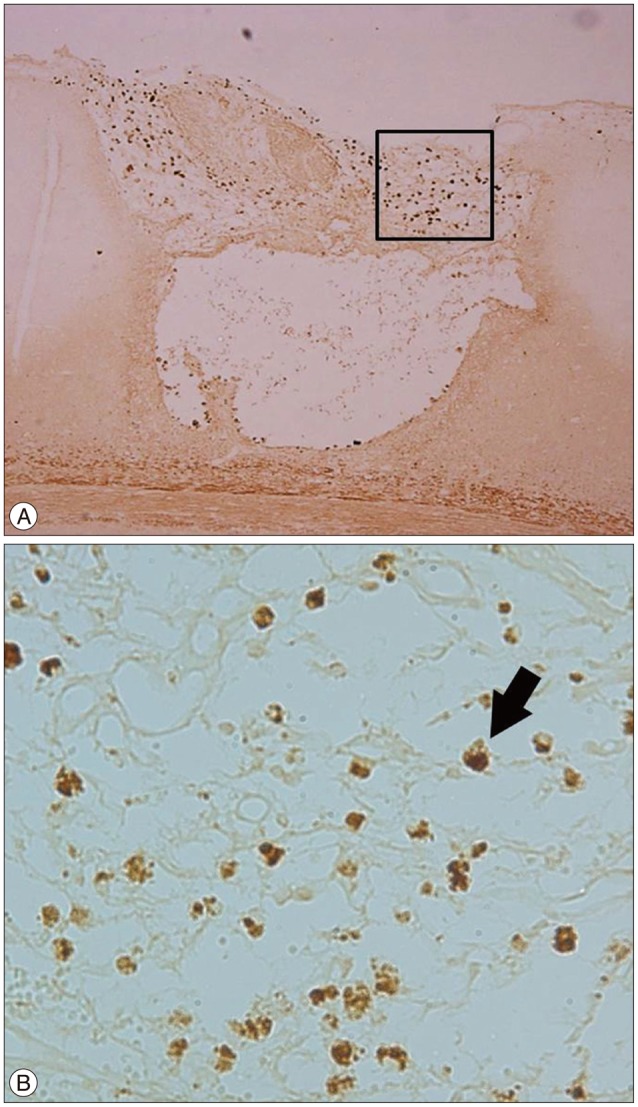
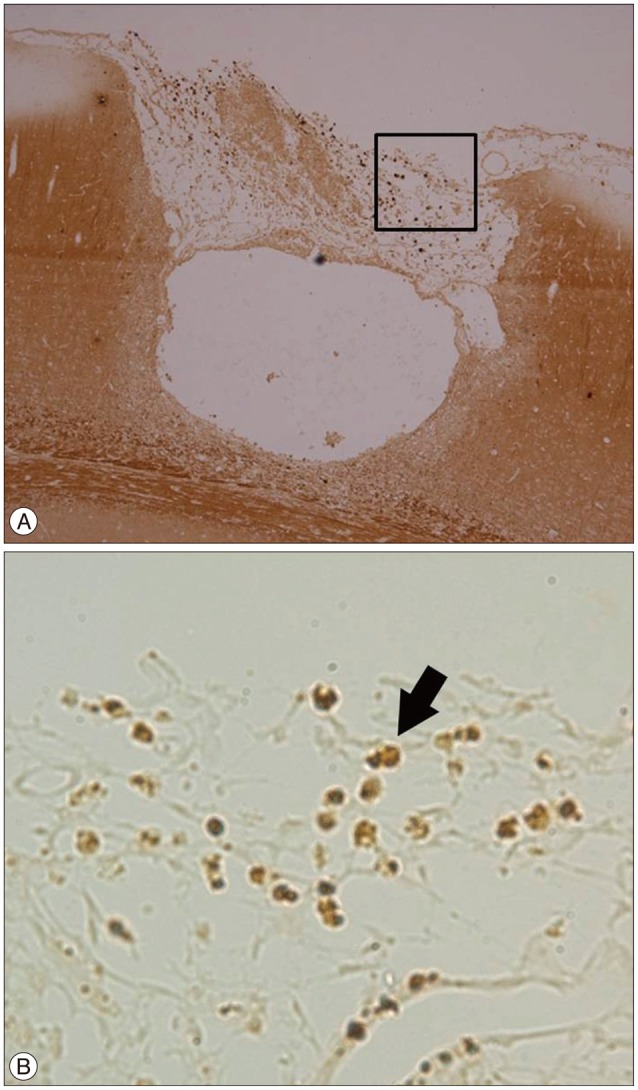
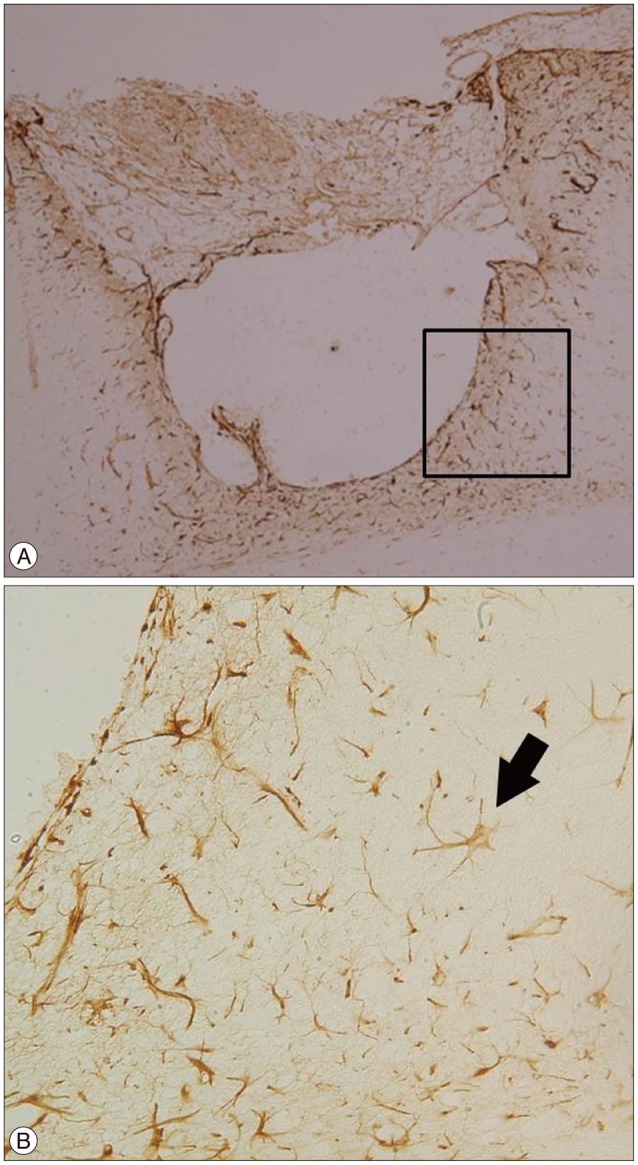
 XML Download
XML Download